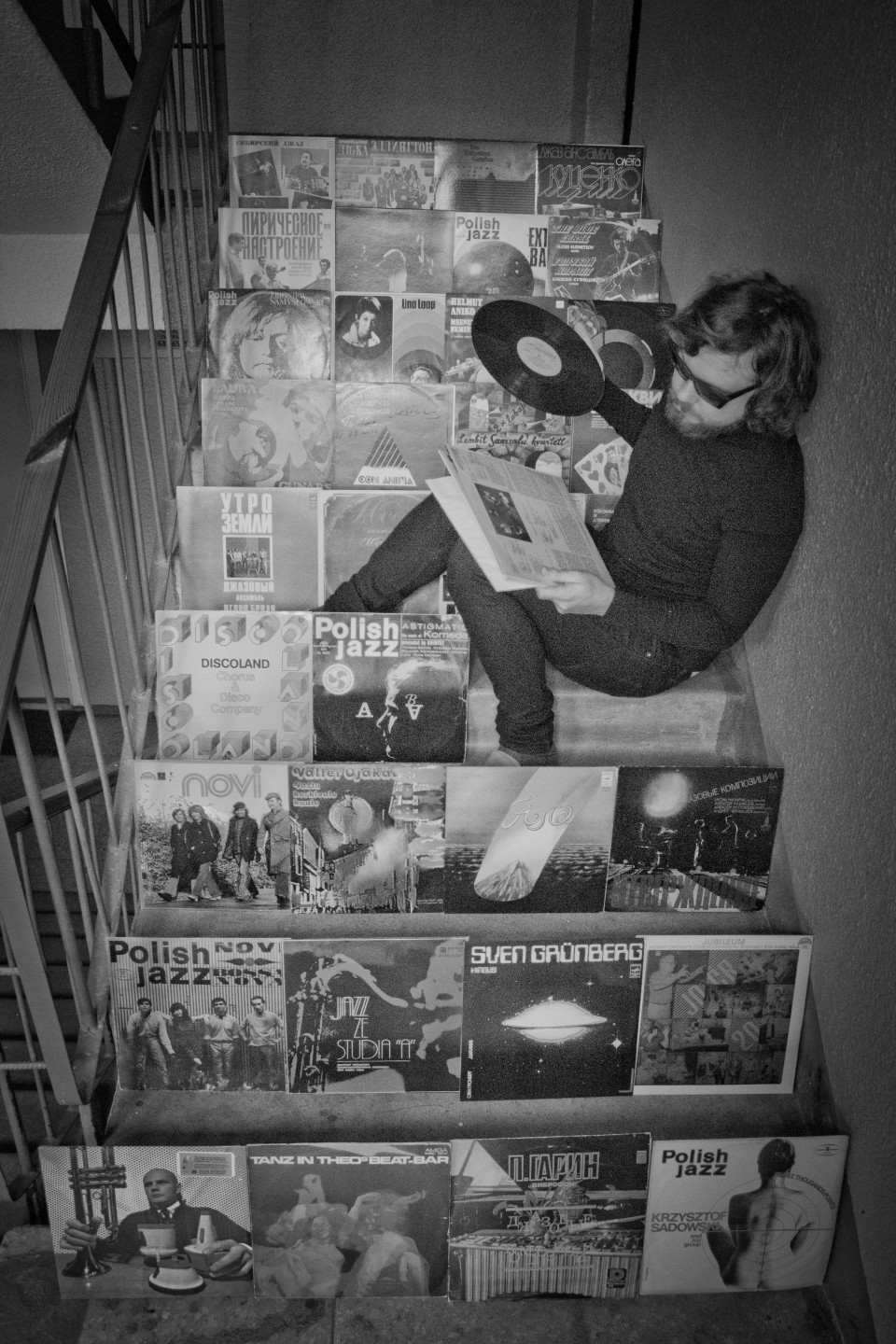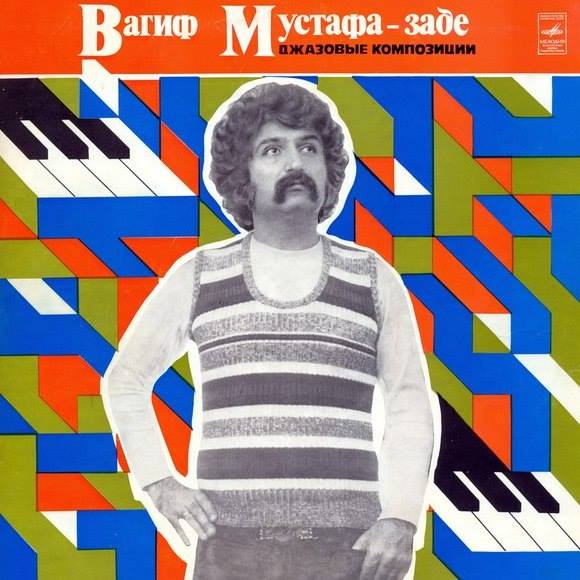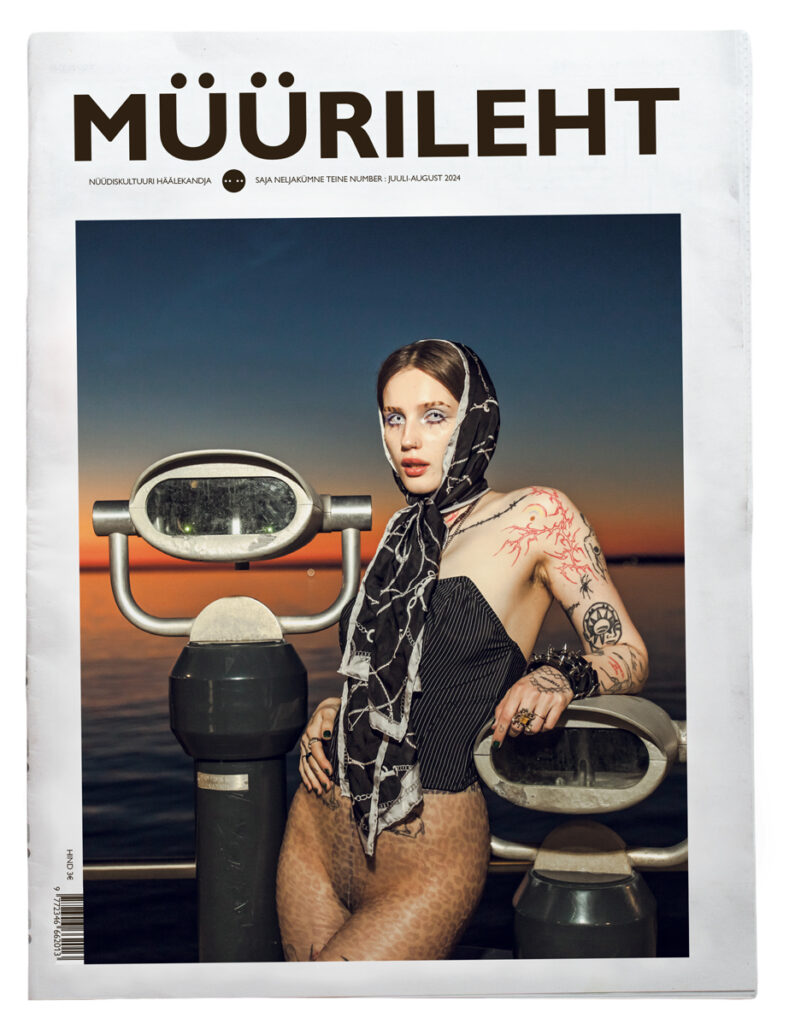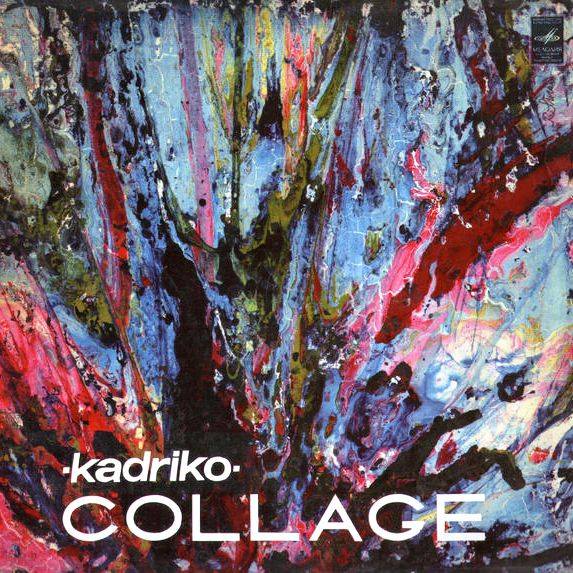Discovering the funky side of the Iron Curtain
Lugemisaeg 15 minIt’s not a rare thing to be into back catalogue music. To bring it closer to the wider audience, however, is a noteworthy mission. As with every totalitarian regime, there’s mysticism in what went on behind the Iron Curtain. A music man in his own right, Misha Panfilov diffuses some of the misconceptions using a YouTube channel Funked Up East dedicated to the funky universe of sounds from the Soviet Union.

As a recovering vinyl junkie, he’s more selective than ever in what he buys and shares with his rapidly growing subscribers on Youtube. So when Misha isn’t working on the Estonian jazz-funk band Estrada Orchestra, or composing library music for a yet unreleased movie, he uses the time to dig around, rip and upload. In the following interview we touch on this positive addiction, on the legendary Russian record label Melodiya, the reissue culture and talk about life in the USSR in general.
Chapter I: when, why, how?
How did you get into collecting records? Do you remember your first?
Well, everything started with a spontaneous bet. I always wanted to grow a beard and I wasn’t patient enough to do it. So, a friend told me, “If you don’t cut your beard for 3 months, I will buy you a record player.” It was around 2010. That was an excellent motivation for me to have a beard and start collecting. I went to a local department store and picked up The Soft Parade by The Doors.
When did you get into Soviet records and decide to start Funked Up East?
It was Hannes from LedZeppelin record shop in Tallinn who showed me a funny-looking record of Melodiya Ensemble – the absurdly moustached house band of the Melodiya label from the 70s. I picked it up for around 10 kroons, came home, gave it a shot and thought, “wow, this is really funky stuff, sounds like magic!” I checked Youtube, there was nothing about it, so I decided to rip a few songs. I think the first songs were uploaded around March 2011.
Now you’re uploading more often and mostly full albums. What made you start that?
After that I went to England, lived there for a year with a community full of different people: musicians and painters. When I came back to Estonia, logged onto the channel and saw like 4000 views on these tracks I thought that people are really interested in this.
There’s also a sad story from the early stages of the channel. Estonian composer and sax player Lembit Saarsalu was putting on a show in Theatre NO99 in Tallinn. When I got there, there were ca 10 people watching him, and I saw him looking around emotionally, thinking ‘what the hell, man’. I know musicians such as Jaan Kuman and Tõnu Naissoo are more popular among the youth cause of the reissue culture and PR, but this is a grand maestro – same quality jazz, same funky stuff. This guy is alive and still grooving hard, people should be proud of him. This is something that pushed me to deal with Funked Up East in triple speed, to get more and more out there.
Is that why you do it? To shed light on artists and albums that might otherwise fade away?
That’s a part of it for sure. Also, what cheers me on is the reaction of Western people, because I know this stuff is accessible to Easterners anyway. Me, as a Russian speaker, I can go to Russian databases and find unheard tracks, rip them, and take it to another level by making it listenable and visible worldwide. I can feel that there’s something new I’m doing here, putting otherwise unavailable, old recordings out there, I’m glad to see people find it interesting.
What’s your method for digging these rarities?
There are different methods, second-hand shops for example. The oldest record in my collection was found in Kallaste, Estonia, can you imagine? It’s a small village with Old Believers who emigrated from Russia during the church reform of Peter I. I went to visit a friend, stepped by from a second-hand and found a record from 1956. It was Red Callender’s Swingin’ Suite LP, all original. Very surprising how it had ended up there. Generally I’m digging online and in record shops.
What’s the best deal you’ve gotten over the years?
I have a rare record by this Melodiya Ensemble – a soundtrack for a movie Romance for Lovers from 1974. It is quite valuable because of its limited edition of few thousand copies which means very rare in terms of the Soviet Union. Pop stars like Alla Pugacheva usually had something around 1-2 million copies. I bought it from the internet for 4€.
Tell me about the more obscure stuff. How do you come across them?
This Youtube channel actually got me more into researching online. I’ve got to come back to this Melodiya Ensemble because I think it’s a very underrated band. I’m still searching for their physical album called The Labyrinth – funky, prog-jazz avant-garde stuff. It is very surprising how they got the permission to record this one. Maybe, because they were so big back then and recording easy listening albums while also being a backing band for many pop singers. A lot of the music in the USSR was covered from West but this is something very complex, originally composed.
Chapter II: history lesson
Funked Up East mostly explores the Eastern Bloc countries (e.g. Poland, Czechoslovakia, Yugoslavia) and those along the groove of the Iron Curtain (e.g. Estonia, Latvia, Lithuania, Georgia). Funk, jazz, disco – these styles come from the Western hemisphere. Japan is known for putting a freaky twist on everything from the West, wowing original composers in the process. Is that what Funked Up East brings to light about Eastern European music?

For sure, it’s a mix of different styles. If you check Estonian, Latvian and Russian jazz compositions recorded in 60s-70s it can be a fusion of a capella, bebop, and folk. Composers used to take a folk tune from the old days and do it in jazz arrangements. Collage is the perfect example; they’re one of my favourite Estonian bands. If you listen to the last track “Alfabeet” from their first album Collage, you can see how experimental pop artists could go in the Soviet Union in 1971 (excitedly) and not only by USSR standards. It wasn’t very common worldwide to experiment like this. In America they did jazz, basically the “real” jazz, but if you look at different countries, you see there’s jazz plus something else, something uniquely characteristic to this country.
Did composers get in trouble for this music?
No-no (shakes head), rock music was the one that was something terrible for the Soviets. Jazz was alright. Authorities thought, you know, at least these guys don’t say too much. They’re laid-back and can play masterfully. That changed in the 80s when the punk movement came and along with it provocative lyrics and protest.
Very important was the the Moscow Jazz Festival that started in 1965 and lasted till 1968. After Kalevi Sports Hall was built in Tallinn it hosted the International Jazz Festival in ’67. Keith Jarrett came here, can you imagine that? He played with Charles Lloyd and Jack DeJohnette. They recorded their gig on tapes and released an album called Charles Lloyd in the Soviet Union in the same year.
It’s interesting to hear that there were snippets of freedom during the time of USSR. Western people perceive Soviet Union as being a totalitarian regime where freedom of expression wasn’t possible.
I think Funked Up East proves the fact that it was quite difficult, but still possible to record and release good music in the Soviet Union.
How long did this freedom last?
Until early 70s. There was also a short period of freedom in late 70s until early 80s because of the Olympic Games. Before that in the early-mid 70’s many fantastic albums were banned and shelved. Nevertheless, those guys on Melodiya’s jazz side must’ve been cool for letting some of this music be born. There are some fascinating jazz albums that are hard to imagine were ever recorded and allowed to be released, like Egils Straume Jazz Combo (1977), Ganelin Trio (1977) and Tõnu Naissoo (1970). In Estonia it was always more free, it was the closest thing to the Western paradise.
Some of these cover artworks and music are surreal, also a lot of the music on Funked Up East is tagged as “psychedelic”. How much do you know about the drug culture during these times in the USSR?
Well, about drugs, as I know they weren’t legally restricted in the 60s. If we’re talking about marijuana, it was quite okay. Most people just didn’t know about it while it grew naturally in places like Siberia and Kazakhstan. This changed when the hippie movement raised its head in the US. Now, authorities saw joint as the weapon of the free mind and an influence of the Western parasites.
So before it got banned, they probably had the chance to light up.
Yeah, probably. During this Olympic time, the second period of openness, there were avant-garde movements in Leningrad. A lot of port wine was downed by these guys. They also talk about this plasticised thingy (talking about hash) and some pills that suggested happy mood and a feeling of flying.
Chapter III: reissue culture, legal issues and library music
A chunk of the music you upload is library and score music from movies and cartoons. Tell me about your fascination with these soundtracks.
I’m a big fan of Estonian cartoons from 60s to nowadays. Every time I watch them I also, as a musician, focus on music and sounds. I watched Lend (The Flight) by Rein Raamat and was impressed with the sounds, the library feel, prog-funk vibe that was happening and felt like it should be on my channel. I have to mention a cartoon called The Mystery of the Third Planet from 1981. People were crazy about Moog synths getting into electronic music and some space themes back then.
Talking about the legal aspect. Does the thought ever cross your mind that some Melodiya lawyers might come at you? Or is the CEO an 80-year-old guy who doesn’t have internet?
(Smiles) I was thinking the same, but turns out the owner of Melodiya is something around 35. So, they started to release vinyl again. They’re not putting out good stuff, nevertheless, those are the steps in right direction. Maybe, they’ll recognize that people want more music and less children’s books.
The reissue culture is really raising its head – in Estonia we have Hyper Records and Frotee Records. Music they’re putting out can be found on your channel, precisely tagged with added artworks. Is there some connection?
I’ve spoke to the guy running Hyper Records and he told me it’s no easy business. Turns out the Collage’s represses haven’t been easy to sell out, even though it was popular outside USSR. It was a different case with Tõnu Naissoo Trio’s self-titled album. I uploaded it in 2013, after borrowing it from a friend. He got the original album for 50 cents in perfect condition. Then Jazzaggression label repressed it in 2014 and it’s pure gold now. Only 500 were pressed, re-release costs around 30-50 euros.
Second most popular Estonian album on Funked Up Eeast is Collage’s Kadriko. Do you think it might be the other way around? Music people digging on your channel and deciding: we should reissue this!
I don’t know. (Shakes head) Maybe. The thought has crossed my mind. I just think there are many people like me who love good music, and have a similar mindset. It’s possible that people get inspired and decide to look up the rights owners. I’ve seen some comments below the videos, “This thing should be reissued; do you know who the owner is?”
I wonder how much undiscovered gems are stuck in these physical archives.
Absolutely! I don’t know why, but they’re quite closed, especially in Russia. They want to receive money for letting people take a peak. I’ve heard it’s not the best idea to deal with Melodiya and that you’ve got to contact 4 different guys before getting in touch with the composer. Then you might learn he doesn’t own the rights at all. In Estonia, you have to go to the Estonian National Broadcasting archive, dig around there and contact the owner, who’s more often the composer.
There are probably a lot of stories like the one about Sixto Rodriguez hidden inside these archives.
Surely. I went to a lecture by Vladimir Tarasov, one of the best Soviet drummers who became a superstar in Lithuania. He formed a very famous trio together with Vyacheslav Ganelin and Vladimir Chekasin. They were not allowed to play in big cities. So basically, Tarasov was unkown inside most Soviet Union but famous in Czechoslovakia and Poland; even in the West, as they played at festivals in West-Germany. All That Jazz documentary was even made by the BBC. So, what the hell?! Some Englishmen are making a movie about Russians in Leningrad but their own people just don’t care.
There used to be a Soviet record company outside USSR as well, called Leo Records. What was that all about?
You’re right, there was a gentleman, Leo Feigin, who immigrated to London in the 70s, a huge music fan. He knew about interesting avant-garde acts happening in Leningrad that were never released so he decided to ask these artists to send him their music. Sure enough, and with the help of some good people, the tapes were illegally transported to London. Starting from late 70’s Leo Feigin started releasing LPs and thanks to the guy we can now enjoy this fantastic music.
Chapter IV: Misha
Tell me more about yourself. What did your parents do?
My father used to be a drummer. In the 60s, he was playing surf music here in Tallinn, in 70s he went to study in Leningrad and started a hard-prog band. And my mom paints. So they’re kind of artsy people.
So you must’ve had records at home back in the day?
I had some records at home, but I was very good at breaking and throwing them around like frisbees. My first record experience, though, comes from when I was 6 years old. I couldn’t say the letter “r”, and there was this children’s story on the record called “Little Tiger Rrr”. And this guy was singing about it, something like, “Everybody say Tiger-r-r-r!” This is how I learned to say the letter and maybe this is why I’m so thankful to vinyl.
When did you get more serious about music?
In 2003 I was very inspired by the Beatles and the British Invasion, because of my dad who was a big fan. Then at Christmas I received an acoustic guitar, I was not pleased with that cause I wanted a bass, but my dad said, “But with this one you can write songs!” He was right, this was what I started to do. I met some dudes, we formed a band and called it Kuklachew & The Space Cats. We were extremely inspired by surf music and Frank Zappa by that time. And by the way, Kuklachev is a world-famous Russian cat trainer who has a cat theatre in Moscow. I don’t know what he’s using to get them to dance…
And now?
Now, we started Estrada Orchestra and are about to put out our debut funk-disco album…On vinyl!
Does your fascination with library music carry over to music writing?
Yeah, people usually say that when I write music it always sounds like it’s the music for an unreleased movie. It can be catchy or not, but the vibe of backing music for some action is characteristic to it. It’s part of the writing process, me visualizing movements.
After listening to obscene amounts of this stuff, I bet you could write interesting movie scores. Do you have that ambition? What would be your dream project?
(Stays humble) That’s a dream of mine indeed. I’d love to work on some sci-fi and space music, or nature movies. I’m recording different compositions using synths and electric instruments; we’ll see what comes out of it. There’s definitely a vintage feel to it.

